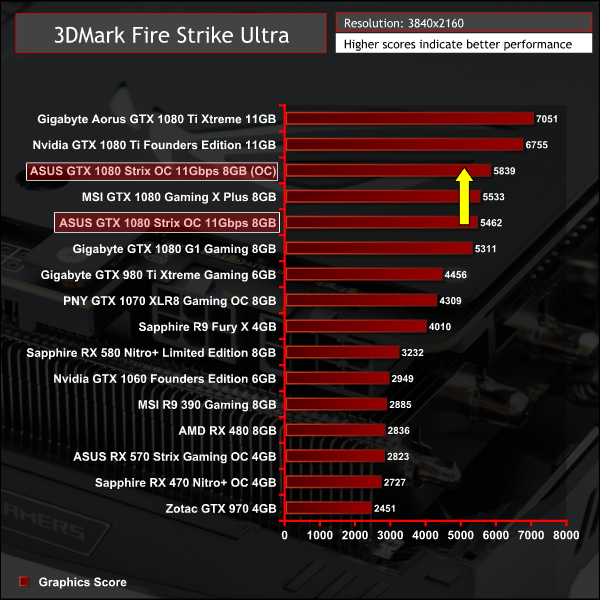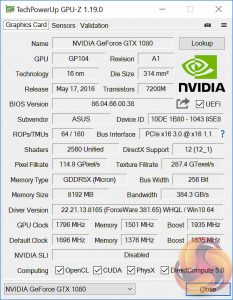Overclocking frequencies will always vary between GPUs so the performance of review units is not to be taken as representative of how retail cards would behave.
The ASUS card we tested became unstable beyond 1796 (1935) MHz core and 1501 MHz memory. This frequency increase across the core and memory resulted in an approximately 7 per cent overall boost to 3D performance in 3DMark.
The MSI GTX 1080 Gaming X Plus model achieved 1833 (1973) MHz core and 1501 MHz memory, for reference, which was slightly higher and gave slightly better performance, 5943 in the below test.

 KitGuru KitGuru.net – Tech News | Hardware News | Hardware Reviews | IOS | Mobile | Gaming | Graphics Cards
KitGuru KitGuru.net – Tech News | Hardware News | Hardware Reviews | IOS | Mobile | Gaming | Graphics Cards





That’s a pretty heavy Asus tax when the MSI GTX1080 Gaming X Plus 11gbps is currently available for £460 (£503+£43 msi cashback) if you shop around.
I picked up the MSI GTX1080 Gaming X plus (shorten the names ffs lol) over the Asus because I have a morbid fear of small triple fans after living with a Vapor-X for 3 years, it’s good to see they have the acoustics in check. After a lot of research I still think the MSI is the quieter of the two even if it drops a degree or two which I can live with.